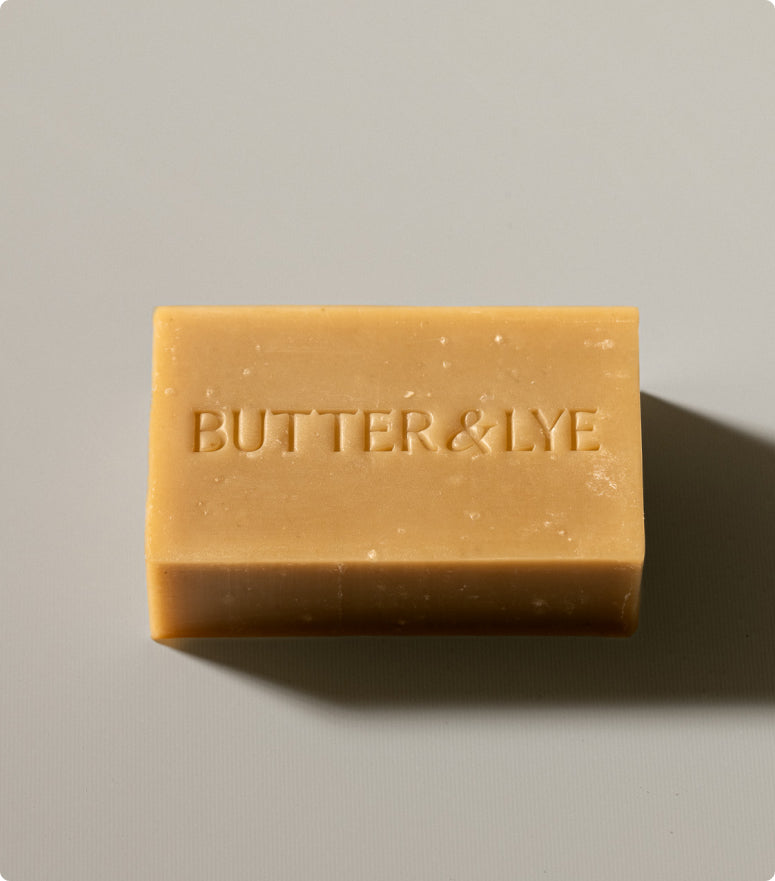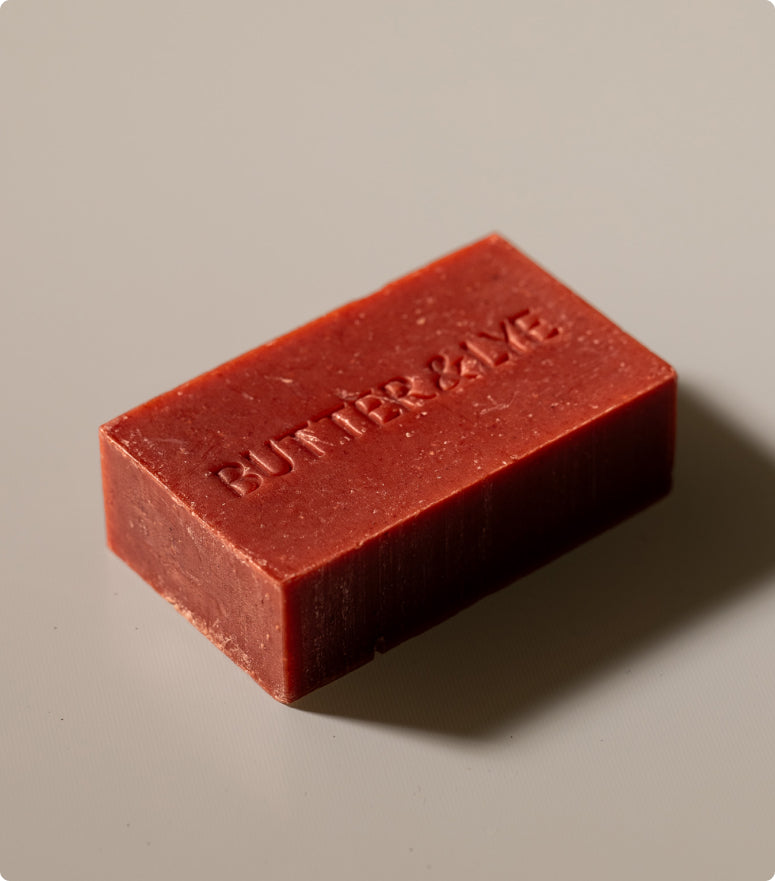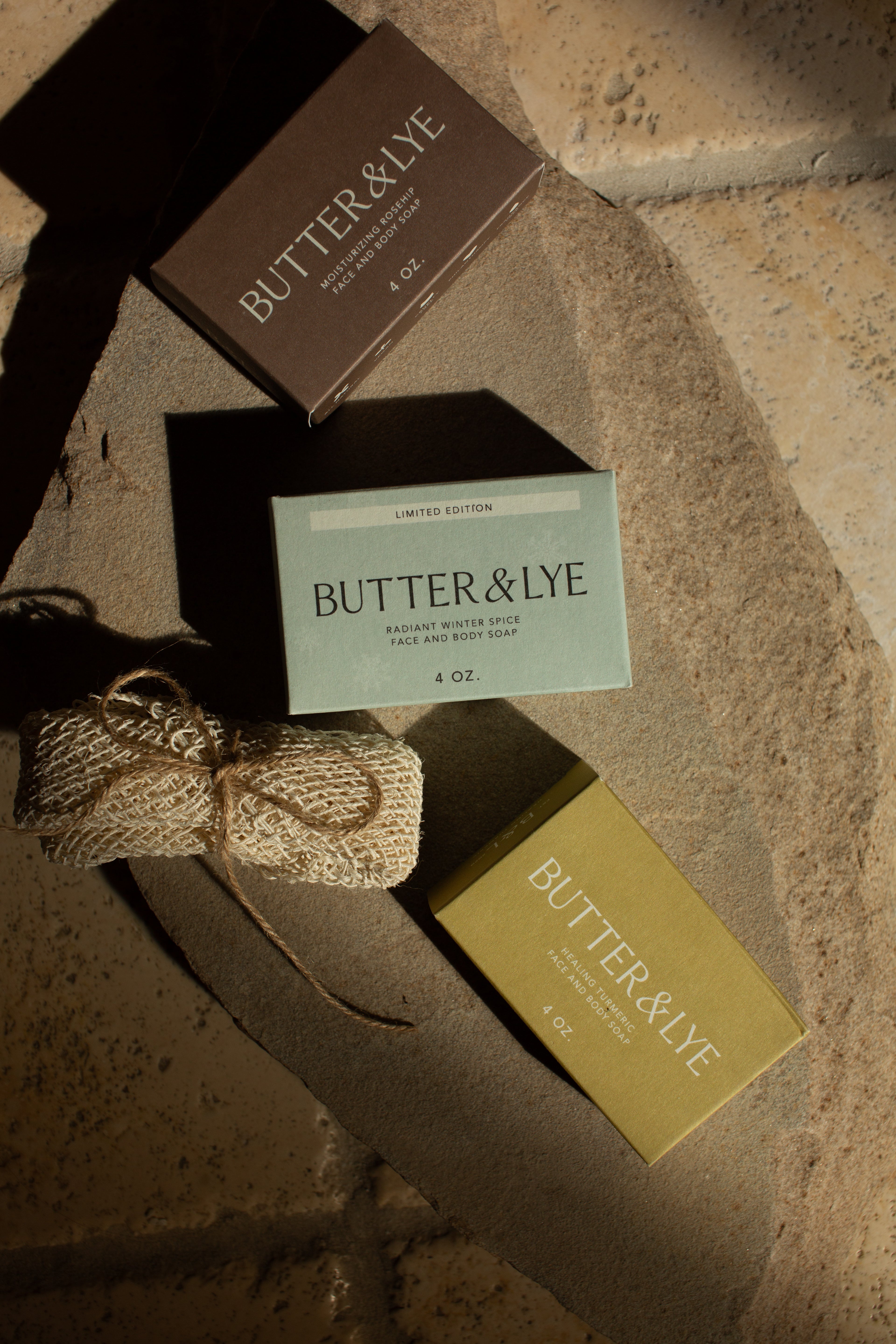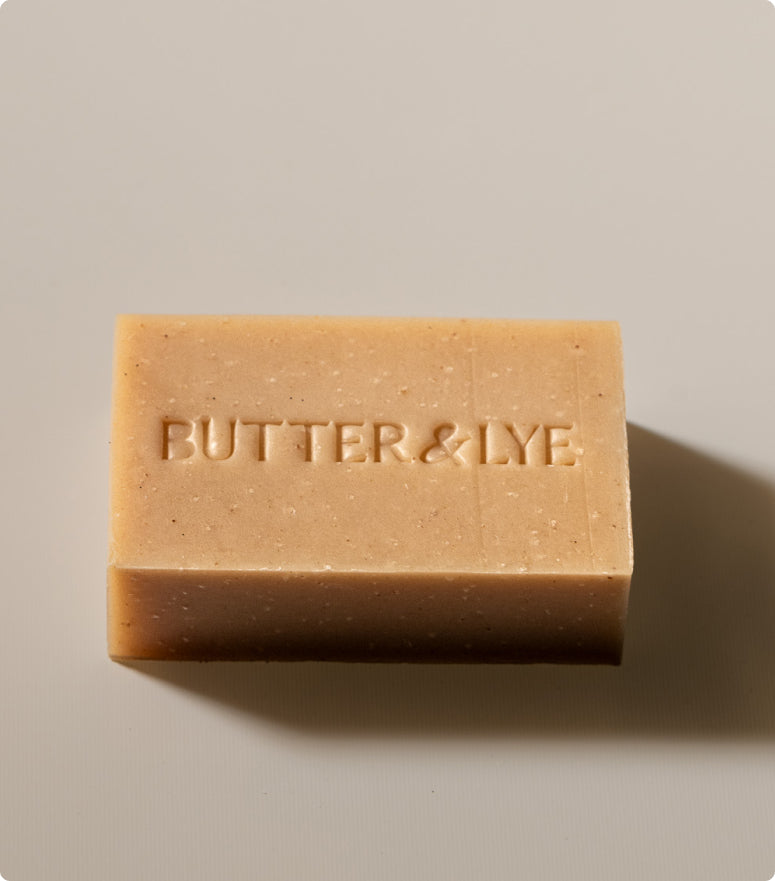Reading the back of a soap label shouldn’t feel like reading a chemistry textbook, but for some people, it does. Long ingredient lists, confusing terms, and hidden additives can make it hard to tell what you’re actually putting on your skin. The truth is, not all soap is created equal. Understanding what’s on the label is the first step in choosing something that’s good for your skin and better for the planet.
Here’s a simple breakdown of what to look for, what to question, and what to avoid altogether when you’re shopping for bar soap.

Ingredients to Look For
If you’re aiming for a non-toxic, skin-friendly bar, keep an eye out for ingredients that nourish rather than strip. Here are a few worth looking for:
-
Saponified plant oils (like olive oil, coconut oil, castor oil): These are the base of traditional soap and help cleanse while keeping skin soft.
-
Natural clays and botanicals (like pink clay, turmeric, or charcoal): These add gentle exfoliation, detoxification, and soothing properties.
-
Shea butter: A rich, plant-based moisturizer loaded with essential fatty acids and antioxidants. It softens and conditions dry or sensitive skin while supporting the skin barrier.
-
Essential oils (used sparingly): If there’s any scent, make sure it’s coming from essential oils, not synthetic fragrance.
A good soap label should be short, clear, and filled with names you recognize.
Turmeric is one of our favorite ingredients lately!
Red Flags and What to Avoid
Here are some common ingredients that often show up in soap but don’t serve your skin:
-
Fragrance or “parfum”: These are blanket terms that can hide dozens of synthetic chemicals, many of which are linked to skin irritation or hormone disruption.
-
Sodium lauryl sulfate (SLS) and sodium laureth sulfate (SLES): These foaming agents are often found in commercial soaps and can be harsh on the skin barrier.
-
Artificial colorants or dyes: Often listed as “FD&C” or “D&C” colors. These are petroleum-derived and can cause irritation, especially for sensitive skin.
-
Tetrasodium EDTA or BHT: Used to extend shelf life, but not something your skin actually needs.
If you can’t pronounce it and it’s not naturally derived, it might be worth avoiding.
Replace toxic soaps with the better choice:
Bestsellers
“Natural” Doesn’t Always Mean Non-Toxic
Just because a product says “natural” or “green” on the front doesn’t mean it’s made with clean ingredients. These terms aren’t regulated, which means brands can use them without meeting any specific standard. Instead of relying on marketing claims, flip the bar over and read the ingredients list directly.
Better yet, look for brands that explain why they use certain ingredients and what each one does. Transparency matters more than trendy labels.
What a Butter & Lye Label Looks Like
We keep it simple. Every Butter & Lye bar is crafted with plant-based oils and functional ingredients, including clays, botanicals, and superfoods. There are no added fragrances, synthetic colors, or preservatives… just ingredients that support your skin, not confuse it.
Here’s the actual ingredient list from our Healing Turmeric Face & Body Soap:
Ingredients: Saponified oils of coconut, olive, and castor, organic turmeric powder, organic shea butter, kaolin clay, rosemary extract.
 That’s it. Every ingredient serves a purpose: to cleanse, soothe inflammation, and support skin repair gently. And if you ever have a question about what’s in your bar, we’re always transparent about what we use and why.
That’s it. Every ingredient serves a purpose: to cleanse, soothe inflammation, and support skin repair gently. And if you ever have a question about what’s in your bar, we’re always transparent about what we use and why.
You Deserve to Know What’s in Your Soap
Skincare should be straightforward. If you’re already reading food labels, it’s time to start reading soap labels too. The more you understand what’s inside the products you use every day, the more control you have over your skin health and your overall well-being.
A clean label is about more than what’s missing. It’s about what’s intentionally included to support your skin, your values, and your peace of mind.





